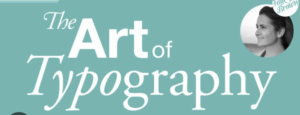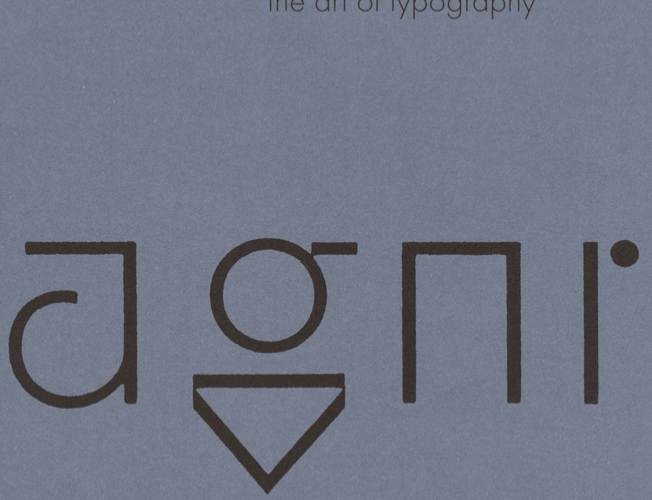Typography is more than just a collection of letters and symbols. It is an art form that has been around for centuries and has greatly influenced the world of design. Typography refers to the style, arrangement, and appearance of the printed word, and it plays a crucial role in conveying messages effectively. Whether it is on a website, a book cover, or a billboard, the choice of fonts can significantly impact how the design is perceived.

The Art of Typography
The history of typography
The history of typography dates back to ancient times when humans first began to communicate through writing. The invention of the printing press in the 15th century revolutionized typography, making it more accessible and allowing for the mass production of books and other printed materials. Different styles of typefaces emerged over time, each influenced by the cultural and artistic movements of their respective eras. From the elegant serifs of the Renaissance to the minimalist sans serifs of the modern era, typography has evolved and adapted to the changing design landscape.
Types of fonts and their characteristics
Fonts can be broadly categorized into four main groups: serif, sans serif, script, and decorative. Serif fonts, such as Times New Roman, have small decorative lines at the ends of each letter, giving them a more traditional and formal appearance. Sans serif fonts, like Arial, lack these lines and are known for their clean and modern look. Script fonts imitate cursive handwriting and are often used to convey elegance or informality. Decorative fonts, on the other hand, are highly stylized and are used sparingly for special design purposes.
Each font has its own unique characteristics that can evoke different emotions and set the tone for a design. For example, a bold and heavy font may convey strength and power, while a light and delicate font may evoke a sense of grace and femininity. Understanding the nuances of different font styles is crucial in choosing the right typeface for a design.
The role of fonts in design
Fonts play a crucial role in design as they have the power to enhance or detract from the overall message being communicated. The right font can make a design more readable, engaging, and visually appealing. On the other hand, a poorly chosen font can make a design appear unprofessional, confusing, or difficult to read.
Typography is not just about choosing a font; it also involves careful consideration of factors such as font size, spacing, and alignment. These elements contribute to the overall readability and legibility of the text. A well-designed typography can create a harmonious balance between the text and the other visual elements in a design, ensuring that the message is effectively communicated.
The psychology of fonts
Fonts have the power to evoke emotions, trigger memories, and shape perceptions. The psychology of fonts explores the impact that different typefaces can have on our subconscious mind. Certain fonts are associated with specific emotions or characteristics. For example, a bold and angular font may convey strength and aggression, while a soft and rounded font may evoke feelings of comfort and friendliness.
Understanding the psychology of fonts can help designers choose the right typeface to convey the intended message. For example, a healthcare brand may opt for a clean and professional sans serif font to instill trust and reliability, while a children’s book publisher may choose a playful and whimsical font to engage young readers.
Typography trends in modern design
Typography, like any other design element, is subject to trends that come and go. Designers are constantly experimenting with new fonts and styles to push the boundaries of creativity. In recent years, minimalist and geometric fonts have gained popularity, reflecting the clean and modern aesthetic that is prevalent in contemporary design. Handwritten and calligraphic fonts have also seen a resurgence, adding a personal and human touch to digital designs.
Keeping up with typography trends is important for designers who want to create fresh and relevant designs. However, it is equally important to balance trends with timeless design principles to ensure that the typography remains effective and impactful.
Tips for choosing the right font
Choosing the right font for a design can be a daunting task, given the vast number of options available. Here are some tips to help designers make informed font choices:
- Consider the audience: Different fonts appeal to different demographics. Understanding the target audience and their preferences can guide the font selection process.
- Match the tone: The font should align with the message and tone of the design. A serious business document would require a different font than a playful invitation.
- Test readability: Fonts should be legible in different sizes and across various mediums. Testing the readability of a font is crucial to ensure that the message is easily understood.
- Create contrast: Choosing fonts with contrasting styles can add visual interest and hierarchy to a design. Combining a serif font with a sans serif font, for example, can create a pleasing contrast.
- Consider scalability: Fonts should be scalable without losing their legibility or visual appeal. This is particularly important for digital designs that may be viewed on different devices and screen sizes.
By following these tips, designers can make more informed font choices that enhance the overall design and effectively communicate the intended message.
Using fonts effectively in different design mediums
Fonts are used across a wide range of design mediums, from websites to packaging to signage. Each medium has its own set of requirements and considerations when it comes to typography. For example, fonts used in web design need to be optimized for digital screens and should be web-safe to ensure consistent rendering across different browsers and devices. On the other hand, fonts used in print design need to consider factors such as ink absorption and legibility at different sizes.
Understanding the specific requirements of different design mediums can help designers make informed decisions about font selection, size, and spacing. It is important to test the chosen fonts in the intended medium to ensure that they are effective and visually appealing.
Famous fonts and their impact on popular culture
Some fonts have become iconic and are instantly recognizable, often due to their association with famous brands or movies. These fonts have had a significant impact on popular culture and have become part of our collective visual language. For example, the Coca-Cola logo is instantly recognizable due to its distinctive cursive script font. The bold and curvy letters of the Disney logo evoke a sense of magic and wonder. These famous fonts have become synonymous with the brands they represent and have played a crucial role in building brand identity and recognition.
Conclusion
Typography is a powerful tool in the world of design. The choice of fonts can greatly impact the overall effectiveness and visual appeal of a design. By understanding the history, characteristics, and psychology of fonts, designers can make informed font choices that enhance the message being communicated. From choosing the right font to using it effectively in different design mediums, typography plays a crucial role in creating visually engaging and impactful designs. So next time you see a beautifully designed website or a captivating book cover, take a moment to appreciate the artistry of typography that went into creating it.
CTA: Explore the world of typography and unleash your creativity in design by experimenting with different fonts and understanding their impact.

